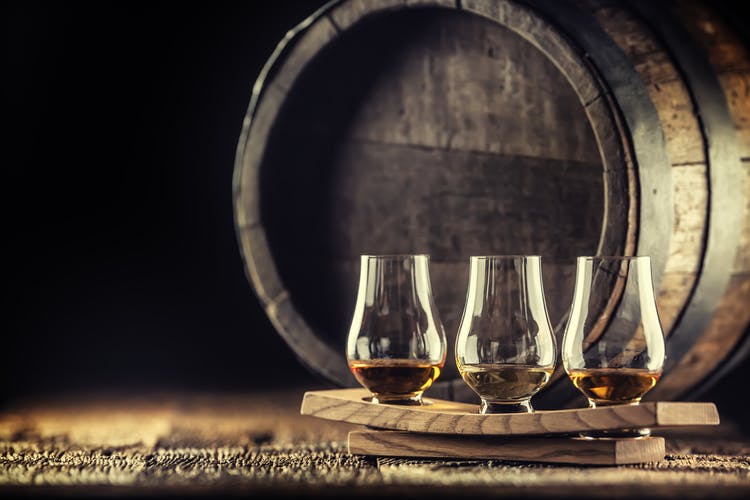
First and foremost, tasting a rum is a personal experience. The aromas perceived can vary from one person to another.
Often overlooked by enthusiasts, it is through tasting that one can identify all the aromas that make up the rum.
In this article, discover everything you need to know to taste rum in the best possible conditions.
Les prérequis à respecter pour une bonne dégustation
Choosing the right glass for rum tasting
Undeniably, the tulip-shaped glass is the most suitable for rum tasting. This type of glass allows for better aeration of the spirit by increasing the surface area in contact with the air in its lower part. INAO glasses, commonly used for professional tastings, are also perfectly suited to this approach.
When rum comes into contact with air, additional aromas are released, enriching the olfactory experience. The tulip shape also encourages the formation of dry residues on the inner walls of the glass, a phenomenon that helps to concentrate aromas.

Thanks to this design, the heavier aromatic compounds, which gather at the bottom of the glass, are pushed upward and reconcentrated near the rim. This allows for a better perception of the rum’s aromatic nuances during tasting.
Regardless of the type of glass used, it is essential that it has a tulip shape to optimise the tasting and fully appreciate the rum’s complex aromas.
The importance of the tasting environment
The location where the tasting takes place can have a real impact on the experience. Tasting rum in a well-ventilated room will not have the same effect as in a closed space.
Moreover, certain elements should be avoided when tasting rum or any other spirit. Smells of paint, coffee, or perfume can quickly interfere with the senses during the tasting.
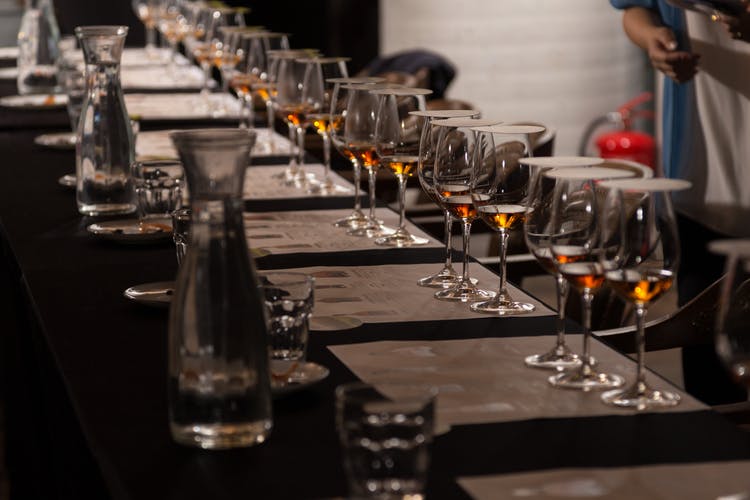
While smells can play a crucial role in rum tasting, ambient noise is equally important.
During your tasting, you will need focus to identify and describe the flavours you perceive. We tend to remember a rum’s characteristics better when we are fully concentrated.
Just like the tasting location, aim for a neutral environment. Avoid perfume, cigarette smoke, or consuming highly aromatic foods or drinks such as coffee or chewing gum.
Before and after each tasting, you can also drink water to stabilise the acidity in your mouth.
Adding water during rum tasting
Although often useful, adding water is not essential to the tasting. It can be done after a first neat tasting, to “open up” the rum.
However, it is important that the water does not alter the rum’s structure or texture, and that it is used solely as an aroma enhancer. For this reason, it should not be too mineral. It is therefore preferable to avoid tap water and highly mineralised waters such as Contrex or Hépar, which could unbalance the tasting.
Furthermore, the purpose of adding water is not to dilute the rum, even if it reduces its alcohol content. This is why it is best to add it drop by drop, to avoid breaking the structure of the rum being tasted.
Tasting rum in 4 steps
First step: Observe the rum
Before beginning the tasting, it is important to observe the rum to analyse its colour, clarity, and viscosity.
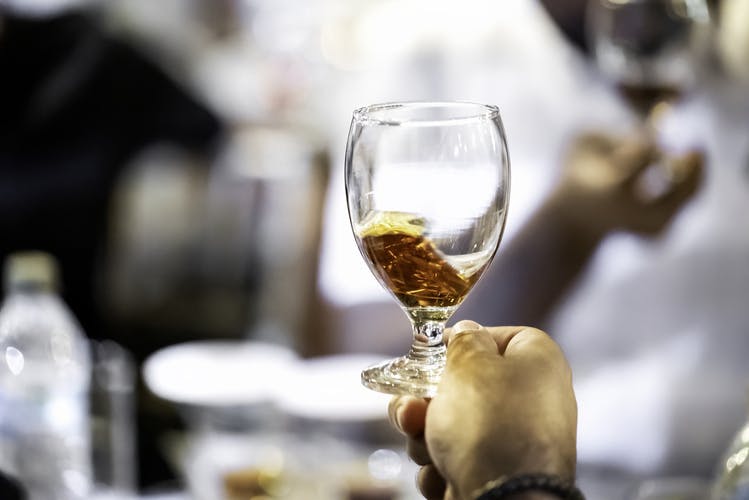
Just like whisky, its colour palette ranges from the pale golden hues to the deepest amber. This variation comes mainly from cask ageing. Unlike whisky, rum can also be completely colourless if it has not been aged, since the distillate is colourless when it leaves the still. Ageing in casks gradually imparts darker shades.
However, analysing the colour only makes sense if the rum has not been artificially coloured. Some rums contain caramel to adjust their shade, which can distort the visual interpretation. By default, a rum without additives usually bears a specific mention on its label.
Second step: Smell the rum
Smelling a rum delivers an abundance of information. With the human nose capable of detecting over a trillion scents, the sense of smell is the most important during a tasting.
Smelling rum is done in two stages. First, bringing the glass to your nose for the first time allows the brain to get an initial perception of the aromas. Once these dominant aromas are identified, the brain can then focus on the secondary notes.
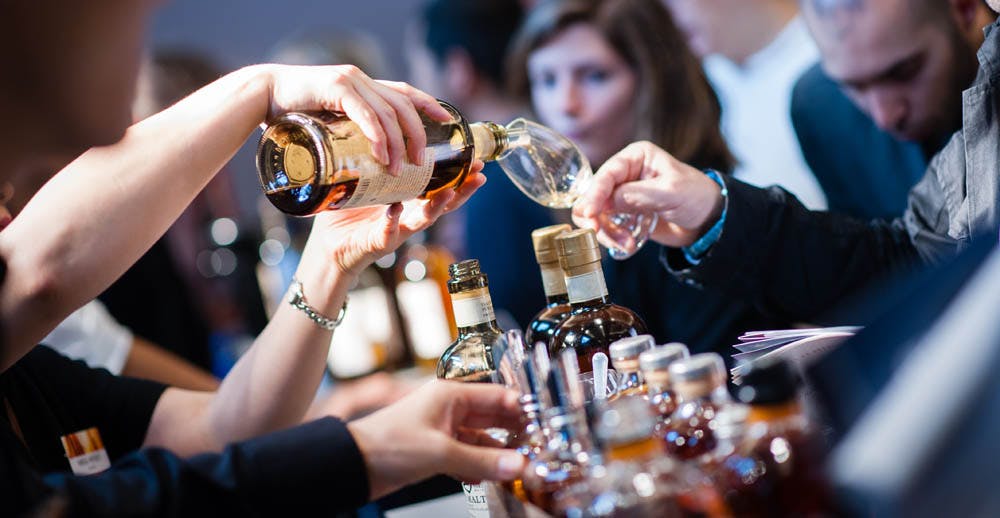
This is why the same rum should be smelled and tasted several times to discover new facets with each approach. Repeating the tasting serves an analytical purpose, helping to identify the presence of certain aromatic families.
There are three types of aromas in rum tasting:
- Primary aromas: originating from the type of sugarcane, influenced by the soil where it was grown, the climate, etc.
- Secondary aromas: produced during fermentation, often dominated by fruity notes from yeast activity.
- Tertiary aromas: linked to cask ageing, bringing pastry-like, toasted, or spicy notes.
Smelling rum is not intuitive for everyone. How should you proceed? Some prefer alternating between the left and right nostrils, while others keep a slight distance between the glass and the nose to avoid alcohol vapours overwhelming the nasal passages.
It all depends on your tolerance and the method that helps you perceive aromas best. Over time, you will find what works for you.
Third step: Taste the rum
The stages of taste and smell are closely connected. Contrary to popular belief, tasting rum is not limited to the five basic flavours: salty, sour, bitter, sweet, and umami.
Mouthfeel
Mouthfeel refers to the sensation of the rum’s contact with the taste receptors in your mouth. It helps determine whether a rum feels delicate, creamy, smooth, silky, and so on.
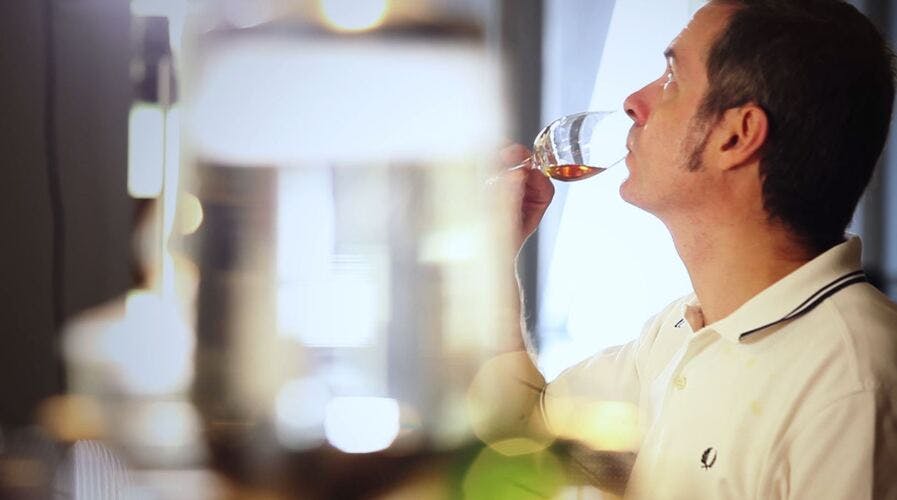
Unlike aromas and flavours, which are perceived by the nose and taste buds, mouthfeel is detected by the sensory receptors of the mouth, tongue, and throat, via the filiform papillae.
Final step of the tasting: the finish
The finish is the very last stage of tasting. During this phase, molecules travel from the mouth to the nasal cavity and reach the olfactory system, a process known as retro-olfaction.
It is through retro-olfaction that you can truly appreciate the persistence and depth of the rum’s aromas, as volatile compounds are perceived not only through the nostrils but also from inside the mouth.
When you drink, these volatile aromatic compounds are released in the oral cavity and travel up to the nasal cavity via the back of the throat. They are then detected by the olfactory receptors located in the upper part of the nasal cavity.
F.A.Q
How to store rum bottles after tasting
Rum bottles can be kept for several years after opening, provided you follow a few simple rules to preserve their organoleptic qualities. Once opened, a rum can refine and develop subtle aromas over the first three weeks.
First, store your bottles at room temperature, ideally between 15°C and 25°C. Avoid major temperature fluctuations, which can harm the rum’s quality.
Store rum bottles upright. Unlike wine, rum does not need to be laid down. This upright position prevents prolonged contact between the liquid and the cork, which could degrade it and alter the rum’s flavour.
Make sure the cork is tightly sealed after each tasting. A poorly closed cork will let air in, oxidising the rum and damaging its aromas and flavours.
For better preservation, keep bottles in a dark place or, if your bottle comes with a case, tube, or box, store it inside after each use. These containers provide extra protection from light and temperature changes.
Can you add ice to rum during tasting?
Adding ice to rum during a tasting is not recommended, as it can dilute the flavours and mask subtle aromas. As mentioned earlier, you may add one or two drops of pure mineral water to release the aromas.
What is the ideal temperature for tasting rum?
The ideal temperature for rum tasting is between 18°C and 24°C. At this range, the rum’s aromas are fully released, ensuring optimal tasting.
What is the difference between white rum and aged rum?
To qualify as aged rum in the French Antilles, the spirit must be aged in oak barrels for at least three years. With its amber colour, aged rum offers fruity and vanilla notes, often softer yet spicier than white rum.
White rum can be either traditional (molasses-based) or agricultural (vesou-based) and usually has an alcohol content above 40%. Its roundness and fruity aromas are achieved through several weeks of maturation in stainless steel vats or wooden foudres.
TO DISCOVER RUM FURTHER
La Maison du Whisky has three boutiques in Paris:
In each of these boutiques, you'll find a wide selection of whiskies, rums, sakes, and other fine spirits.
Follow our tasting calendar for upcoming events, or visit the Golden Promise Whisky Bar, which offers an extensive selection of whiskies and other spirits by the glass.
You can also discover the best rum based cocktails.